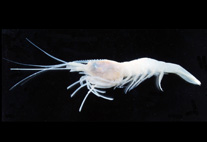Abstract
The paper describes two new species of feather mites collected on Psilopogon virens (Boddaert) (Piciformes: Megalaimidae) in India (Meghalaya): Megalaimobius massarae sp. nov. (Analgoidea: Pteronyssidae) and Picalgoides arbenzi sp. nov. (Psoroptoidea: Psoroptoididae). Males of M. massarae sp. nov. differ from the other three species of the genus by the shape of the transventral sclerite which is much deeper concave. The female of the new species has the external copulatory tub with an acute apex (this structure has a truncated apex in females of other species). Males of Picalgoides arbenzi sp. nov. differ from the closest species P. capitonis Černý, 1974 mainly by the shape of adanal apodemes which are fused into a large arch encircling the anal field. Females of the new species have the hysteronotal shield with acute posterior angles and setae d2 situated on the lateral margins of this shield (in females of P. capitonis the hysteronotal shield has the posterior angles rounded and setae d2 situated at a short distance from the lateral margins of this shield).

